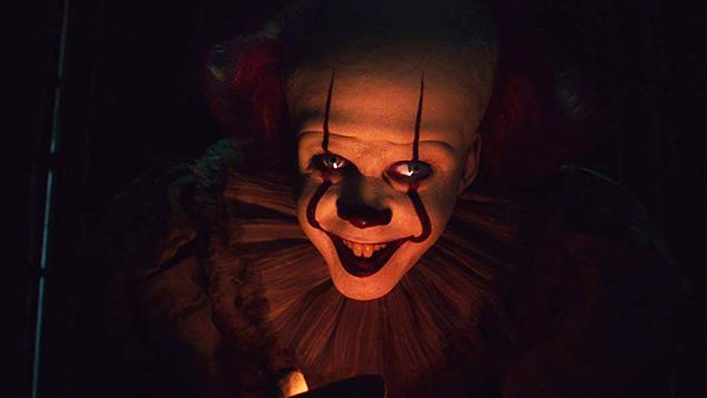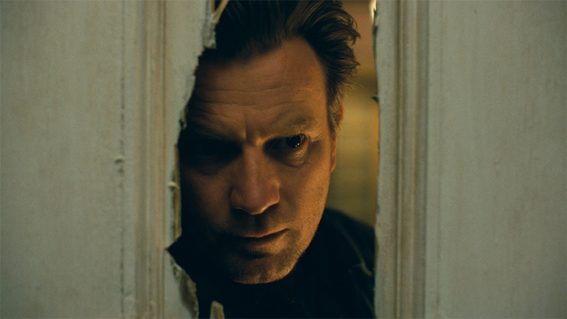Horror movies that mean something and childhood trauma manifested

The best horror movies are about something – whether that’s childhood trauma, racism in America or mass consumerism. Maria Lewis breaks down exactly why that’s so rewarding with IT: Chapter 2 star and horror movie obsessive Bill Hader.
Decades removed from its debut, Halloween is considered the film that kick-started the slasher genre – in which typically young, busty teenage girls are stalked then slayed by a male killer. Yet John Carpenter’s horror classic is and was about so much more, namely white flight in American suburbia.
“Everything was segregated back then. It was astonishing when I think about,” the filmmaker said of his teenage years growing up in Kentucky in the 50s, after moving from New York on The Ringer’s stellar Halloween Unmasked podcast. “These hillbillies can be pretty rough. That’s where I learned about evil.”
It’s one of the key traits that makes It such an enduring horror fable, whether you’re of the Tim Curry or Bill Skarsgård’s Pennywise generation. Sure, on the surface there’s an evil clown killing children and that’s a great way to pitch it to your mates. A sweeping epic about childhood trauma from Stephen King? A much harder sell.
Yet it’s the latter rather than the formula that is key to It’s lasting appeal, according to Bill Hader. “I have kids and it’s amazing how the It movies are culturally, like, a rite of passage,” he says. “It’s weird to have my kids be at a party or at a sleepover and go ‘oh, we watched both t movies, stayed up late, and got scared’. It’s cool.”
That same word-of-mouth sharing of scares is how the 1990 It telemovie first gained traction pop culturally, with the drain scene infamous among a certain age group wanting to freak themselves out. Those genre-loving kids grew up and, like Hader, watched with interest as a whole new generation of tweens and teens became captivated with Andy Muschetti’s first It film in 2017.
“I went with a friend to see it because everyone was talking about it,” Hader says, unaware at the time that a tweet from Finn Wolfhard would start the ball rolling for him to be cast as adult Richie Tozer in It: Chapter 2.
“We liked the first one, the original, and people were saying how good this new one was so we checked it out and had a great time. It’s funny how that all happens sometimes: you go see a thing and I would have never thought I’d be in the sequel.”
The 41-year old Hader is best known for his comedic skill, not just as a long-running cast member on Saturday Night Live but also films such as Skeleton Twins, Trainwreck, and award-winning HBO series Barry. Growing up, he was a fan of Stephen King – “Salem’s Lot was the first proper adult book I ever read” – and consumed almost every film or television adaptation of his novels: good, bad and in-between. As a lover of genre, he was drawn towards pop culture that had something to say.
“That’s probably why I liked The Twilight Zone growing up, because it was really great satire,” says Hader. “Dawn Of The Dead and Night Of The Living Dead, they’re about these bigger social things and the only way to kind of get it out is through a genre piece. I like things like that, where you’re not expecting it. You’re going in to see a thing that ostensibly is just a zombie movie but it’s actually much deeper than that. It treats its audience with a level of respect and intelligence. I appreciate that.”
Carpenter’s Halloween had that going for it too, he says, before the slasher genre started to solidify harmful tropes. “All the slasher after that, like a lot of these things, they missed what was special and deep about the first one,” says Hader. “They just take it at face value and go ‘how can we kill a bunch of women in different ways?’ It’s kind of disgusting.”
A fan of the Blumhouse-produced Halloween from last year – “I really liked David Gordon Green’s remake” – Hader knows the It movies aren’t the only horror films with something to say on the market, citing Get Out and It Follows as two examples. In the past five years, genre movies with a modus operandi have succeeded while those aiming just for superficial scares – Ouija, Truth Or Dare, Slenderman – have failed to make a lasting impact.
In King’s novel, the story jumps backwards and forwards through time as the Losers’ Club experience the enduring evil of It, first as children and then as adults. The 2017 film broke from that formula, charting just the children’s story initially: yet that only covered some 300 pages of what is a 1,100 page novel. While the first chapter was very much about experiencing trauma as children, the second tackles how childhood trauma manifests into adulthood. Some, understandably, cannot handle it. Others rise to the occasion. And that, according to film’s director Andy Muschetti, is why “this second chapter is as necessary to tell as the first”.
















